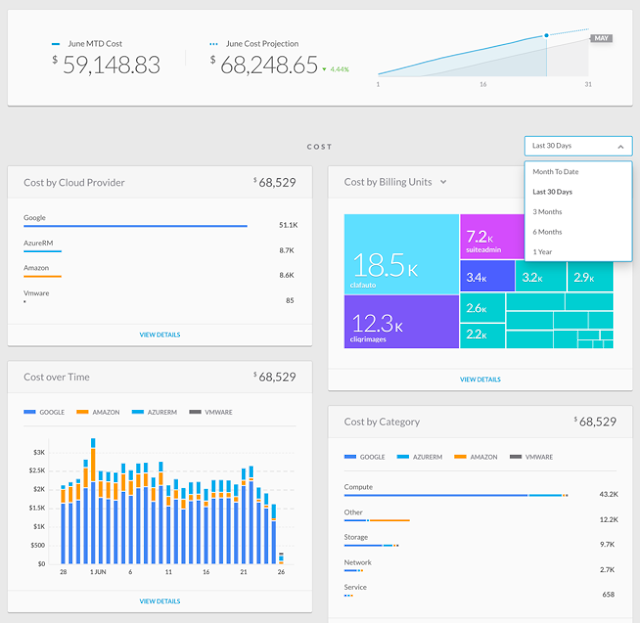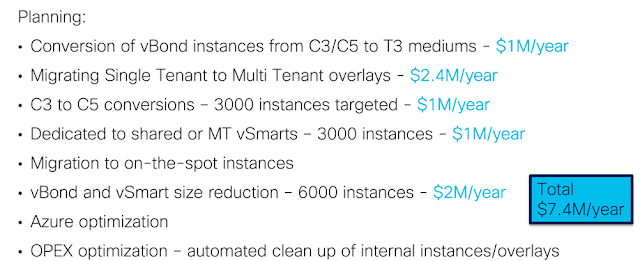This post is the second part of a discussion about optimization of the cloud budget and cost control in your IT organization. The first part is here.
The CloudCenter Suite
The CloudCenter Suite is a key component in this framework: it is made of three modules that offer provisioning, lifecycle automation and – what we are discussing here – cost control.
The Cost Optimizer module collects data from the API of all the cloud providers to create a series of detailed reports, that you can use to understand where and why you spend your money. You can slice and dice the information across different dimensions, and you can schedule reports or download them to feed a billing system.
 |
complete and granular reporting of cloud spend
|
You can create any custom organizational hierarchy to map your business (departments, customers, projects, etc.) and give them visibility and responsibility of the budget consumption.
 |
| custom hierarchy of cost groups |
 |
| budget management |
The Cost Optimizer gives you recommendations for rightsizing, wherever your assets are deployed, analysing their behavior. You can evaluate the suggestion and then act manually, or you can enable the tool to do it for you automatically.
 |
| recommendations for rightsizing and other optimizations |
It will also tell you when it makes sense to adopt reserved instances to get a discount, showing you how much you’re going to save.
Act now to reduce your spending… across all clouds
The best practices and the tools are there. You can choose among tools that are specific to a cloud provider (they all offer good solutions) or a cloud agnostic solution that works with all clouds.
With the Cisco CloudCenter Suite you get a fully detailed report of your inventory, all the services you are consuming everywhere, and the efficiency from a budget standpoint.
You also get actionable suggestions to save money that can be, if you configure the tool to do so, executed automatically. If you prefer, you can just get the list of suggested actions and implement them manually.
Thanks to the Cisco CloudCenter Suite you can setup a common governance model and a set of policies in one place, instead of replicating the build of reports and automation in every single cloud, based on full visibility that goes beyond the suggestions given by your service providers.
All you have to do now is to download and test the CloudCenter Suite (30 days trial), or contact us for a live demo or a discussion of your use cases.







